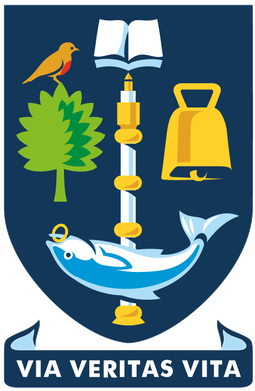
The University of Glasgow is a public research university in Glasgow, Scotland. Founded by papal bull in 1451 [O.S. 1450], it is the fourth-oldest university in the English-speaking world and one of Scotland's four ancient universities. Along with the universities of St Andrews, Aberdeen, and Edinburgh, the university was part of the Scottish Enlightenment during the 18th century. Glasgow is the largest university in Scotland by total enrolment and with over 19,500 postgraduates the second-largest in the United Kingdom by postgraduate enrolment.
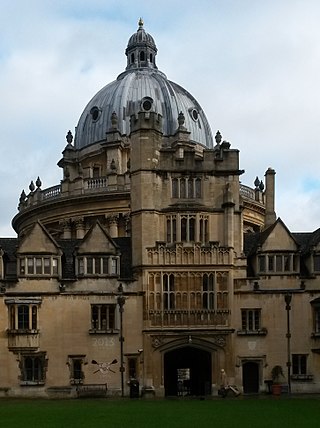
Brasenose College (BNC) is one of the constituent colleges of the University of Oxford in the United Kingdom. It began as Brasenose Hall in the 13th century, before being founded as a college in 1509. The library and chapel were added in the mid-17th century and the new quadrangle in the late 19th and early 20th centuries.

Exeter College is one of the constituent colleges of the University of Oxford in England, and the fourth-oldest college of the university.

New College is one of the constituent colleges of the University of Oxford in the United Kingdom. Founded in 1379 by William of Wykeham in conjunction with Winchester College as its feeder school, New College was one of the first colleges in the university to admit and tutor undergraduate students.
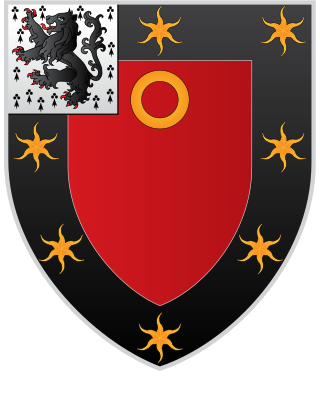
St John's College is a constituent college of the University of Oxford. Founded as a men's college in 1555, it has been coeducational since 1979. Its founder, Sir Thomas White, intended to provide a source of educated Roman Catholic clerics to support the Counter-Reformation under Queen Mary.

Trinity College is one of the constituent colleges of the University of Oxford in England. The college was founded in 1555 by Sir Thomas Pope, on land previously occupied by Durham College, home to Benedictine monks from Durham Cathedral.

Selwyn College, Cambridge is a constituent college of the University of Cambridge. The college was founded in 1882 by the Selwyn Memorial Committee in memory of George Augustus Selwyn (1809–1878), the first Bishop of New Zealand (1841–1868), and subsequently Bishop of Lichfield (1868–1878). Its main buildings consist of three courts built of stone and brick. There are several secondary buildings, including adjacent townhouses and lodges serving as student hostels on Grange Road, West Road and Sidgwick Avenue. The college has some 60 fellows and 110 non-academic staff.

King's College, formally The King's College of Our Lady and Saint Nicholas in Cambridge, is a constituent college of the University of Cambridge. This college lies beside the River Cam and faces out onto King's Parade in the centre of the city.

Wellington Church is a congregation and parish church of the Church of Scotland, serving part of the Hillhead area of Glasgow, Scotland. The building is located on University Avenue, Glasgow, opposite the University of Glasgow.

Heinz Memorial Chapel is a Pittsburgh History and Landmarks Foundation Historic Landmark and a contributing property to the Schenley Farms National Historic District on the campus of the University of Pittsburgh in Pittsburgh, Pennsylvania, United States.
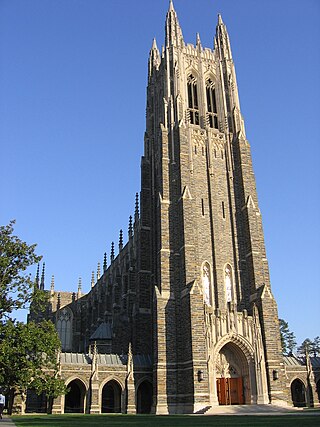
Duke University Chapel is a chapel located at the center of the campus of Duke University in Durham, North Carolina, United States. It is an ecumenical Christian chapel and the center of religion at Duke, and has connections to the United Methodist Church. Finished in 1935, the chapel seats about 1,800 people and stands 210 feet tall, making it one of the tallest buildings in Durham County. It is built in the Collegiate Gothic style, characterized by its large stones, pointed arches, and ribbed vaults. It has a 50-bell carillon and three pipe organs, one with 5,033 pipes and another with 6,900 pipes.
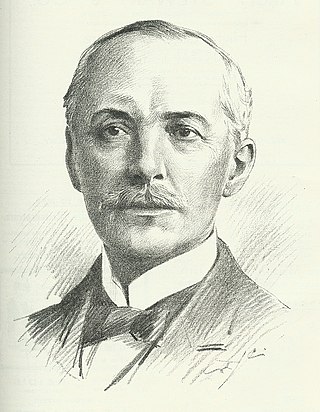
Sir John James Burnet was a Scottish Edwardian architect who was noted for a number of prominent buildings in Glasgow and London. He was the son of the architect John Burnet, and later went into partnership with his father, joining an architectural firm which would become an influential force in British Modern architecture in the 20th century.
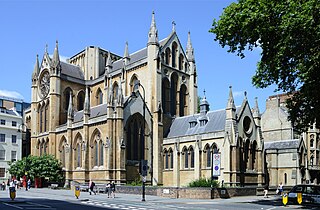
The Church of Christ the King belongs to Catholic Apostolic Church trustees; it is in Gordon Square, Bloomsbury, London. It adjoins Dr Williams's Library and is within sight of University College London. The church is used by the Anglican mission Euston Church for Sunday services and its English Chapel, at its east end, by Forward in Faith for weekday services. It has been a Grade I listed building since 10 June 1954, one of 129 such Christian buildings in London.
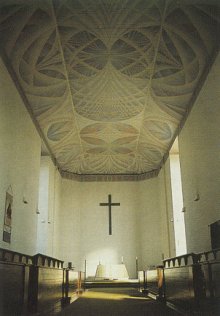
The Mary Harris Memorial Chapel of the Holy Trinity is the Anglican Chaplaincy's chapel on the Streatham Campus of the University of Exeter. It is located at the heart of the campus, beneath Queen's Building and adjacent to the Old Library and the Roborough Building.

Kelvinside Hillhead Parish Church, originally Hillhead Parish Church, is a parish church of the Church of Scotland, serving the Hillhead and Kelvinside areas of Glasgow, Scotland. It is within the Church of Scotland's Presbytery of Glasgow.

The main buildings of Jesus College, one of the colleges of the University of Oxford, are located in the centre of the city of Oxford, England, between Turl Street, Ship Street, Cornmarket Street, and Market Street. Jesus College was founded in 1571 by Elizabeth I caused by the petition of a Welsh clergyman, Hugh Price, who was treasurer of St David's Cathedral. Her foundation charter gave to the college the land and buildings of White Hall, a university hall that had experienced a decline in student numbers. Price added new buildings to those of White Hall, and construction work continued after his death in 1574. The first of the college's quadrangles, which includes the hall, chapel, and principal's lodgings was completed between 1621 and 1630. Construction of the second quadrangle began in the 1630s, but was interrupted by the English Civil War and was not completed until about 1712. Further buildings were erected in a third quadrangle during the 20th century, including science laboratories, a library for undergraduates, and additional accommodation for students and fellows. In addition to the main site, the college owns flats in east and north Oxford, and a sports ground.

The Memorial Gates at the University of Glasgow were erected in 1952 as a celebration of the university's quincentenary, or five hundredth anniversary. They form a portal through the University Avenue side of the perimeter fence around the university's current site on Gilmorehill. They stand before the Hunter memorial and Hunterian Museum, on the other side of the John McIntyre Building from the Main Gate. The large gates in the centre are generally locked, although the small pedestrian gates to the left and right are opened during the day. The gates bear the names of thirty distinguished figures associated with the university. The gates are protected as a category B listed building.

The Lion and Unicorn Staircase, at the University of Glasgow, is located next to the university's Memorial Chapel on the west side of the Main Building. It consists of two flights connected by a landing, the upper flight turning ninety degrees to the left from the lower flight. There is a balustrade adorned with sculptures of a unicorn on the left and a lion on the right. Along with the Memorial Chapel and the adjacent Gilbert Scott Building, it is protected as a Category A listed building.

The Chapel of King's College London is a Grade I listed 19th century chapel located in the Strand Campus of King's College, London, England. Originally designed by Sir Robert Smirke in 1831, the Renaissance Revival chapel seen today was redesigned by the prominent Victorian Gothic architect Sir George Gilbert Scott in 1864.





















